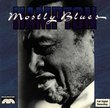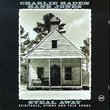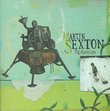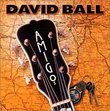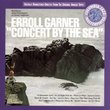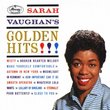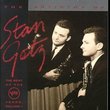| All Artists: Fletch Henderson Title: Wrappin It Up Members Wishing: 1 Total Copies: 0 Label: Abm Release Date: 1/21/2002 Album Type: Import Genre: Jazz Style: Number of Discs: 1 SwapaCD Credits: 1 Other Editions: Wrappin' It Up UPCs: 824046011024, 5038375002508, 669910307854 |
Search - Fletch Henderson :: Wrappin It Up
 | Fletch Henderson Wrappin It Up Genre: Jazz
|
Larger Image |
CD DetailsSimilarly Requested CDs
|
Member CD ReviewsReviewed on 6/6/2007... Cuts include Henderson Stomp, Rocky Mountain Blues, Swamp Blues, Off to Buffalo, Hop Off, My Gal Sal, Hot and Anxious, Comin' and Going, Just Blues, Sugar Foot Stomp, Yeah Man!, King Porter Stomp, Hocus Pocus, Limehouse Blues, Shanghai Shuffle, Big John's Special, Wrappin' It Up, Blue Lou, Stalin' Apples and Jangled Nerves. Great stuff, early big band with a blues tinge.
CD ReviewsHistory of Swing Jazz & More Johnny Hodges | Clark Fork, ID United States | 12/19/2006 (4 out of 5 stars) "Musical Content: 5 stars Sound Quality: 3 stars Packaging: 2 stars Bang for the Buck: 5 stars At first listening, they seem like snappy little fun-time tunes, and they are. But this music is much more. With careful listening, you start to hear the intricate melodic structures and band interplay that cause me to dub the tunes "3 minute symphonies". This collection picks up in 1927, unfortunately after Louis Armstrong had left, so you don't get to hear his influence (once again) on the music. You do get to hear the birth and development of tenor sax in jazz as Coleman Hawkins forged a new language for the instrument, which had never been a jazz instrument before. The Hawk was with the band until 1934 (middle of CD3), then you get to hear how his disciples Chu Berry and Ben Webster carried forward. Rex Stewart (trumpet) and Russel Procope (clarinet) went on to take the Henderson lessons into the Duke Ellington orchestra. Benny Carter, Sid Catlett, Buster Bailey, Dicky Wells, Red Allen all helped spread the news after leaving Fletch. And Benny Goodman made prolific use of Henderson's arrangements in establishing his big band. While not every track here is a jem, they all make for good listening. The generous serving here, while far from complete, did add a lot of new material to my Henderson collection. Sound quality, like most of the Quadrophonic series, is fair. Noise is eliminated very well, and midrange clarity is exceptional for discs that were acoustically recorded. Instrumentalists are fairly distinct during ensemble play, and soloists stand out well. For discs recorded in a variety of different studios, they managed to get a fairly consistent sound without reducing them all to the lowest common denominator. The bass sounds fairly distict. The problem is, for music that begs such close scrutiny, the lack of high end clarity does interfere with catching some of the details of the musical interplay. It deprives the listener of the snap of trumpets and trombones and fails to accurately render Coleman Hawkins' distinctive tone. You're never going to get hifi on old 78 recordings, but after A/B comparisons with 3 other Henderson collections I have, the Quadromania disks came in last on sound quality, although not by a wide margin. The otherwise well-designed CD case fails because the teeth that should hold the disks in place sometimes break or otherwise let go of the disks during transport and/or handling. The documentation lists musicians, dates, and locations for each track, but not the soloists. No biographical or other information is given. If you want better I recommend "Henderson Days" (listed on Amazon as a Coleman Hawkins album). This French import has better sound quality and covers more of what I consider Fletch's best. There are only 6 tracks of the 24 that duplicate the Quadromania set. If you want the best sound quality, get "Tidal Wave" (nearly all of which is contained on CD4). And to see where Coleman Hawkins went next, the Quadromania set bearing his name takes up right where this one leaves off." Wrap it up!!! George H. Soule | Edwardsville, Illinois United States | 06/22/2006 (5 out of 5 stars) "I recently discovered these Quadromania sets from Membran. They are simply treasures if you want a one-stop, broad retrospective of major jazz figures. Although I was long familiar with Fletcher Henderson by reputation as arranger for the Benny Goodman orchestras and knew him as an accompanist for Bessie Smith, I hadn't listened to his band until I bought these. What a band it was. This four-disc set starts out with Henderson's 1927 band that included a who's who of greats--Joe Smith (again, hear Bessie Smith recordings), Tommy Ladnier on trumpet, Benny Morton in the trombone section, Buster Bailey, Don Redman, Coleman Hawkins, Benny Carter, Russell Procope playing reeds. Sometimes Fats Waller sits in on piano to augment Henderson. What I hadn't heard was the incredibly complex interplay within ensemble sections and the distinctive section work of these bands. The collection ends in 1936--83 tracks in all. Yeah, there are different versions of songs from different configurations of the band and comparing them is a real treat. If you buy these discs and actually listen to them, you'll have a clearer understanding of the music that happened before we were born. Hearing early Coleman Hawkins is worth the price of the discs in itself. And Henderson featured many of the Duke's men before they migrated to the Ellington band. After you listen to these discs a couple of times, you can go watch Ken Burns' documentary and know more than he does about jazz. For the pure of heart--buy these discs."
|

 Track Listings (20) - Disc #1
Track Listings (20) - Disc #1